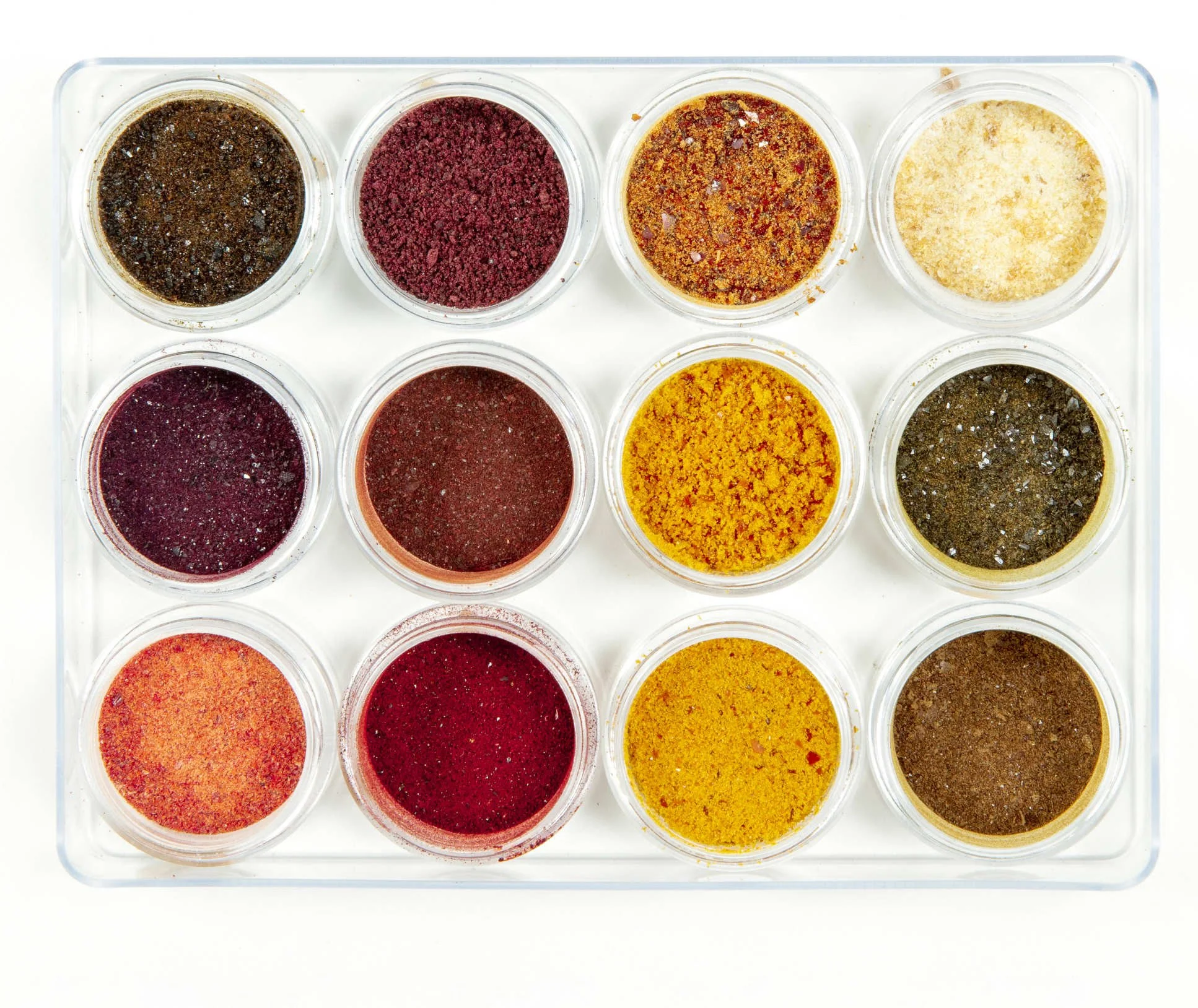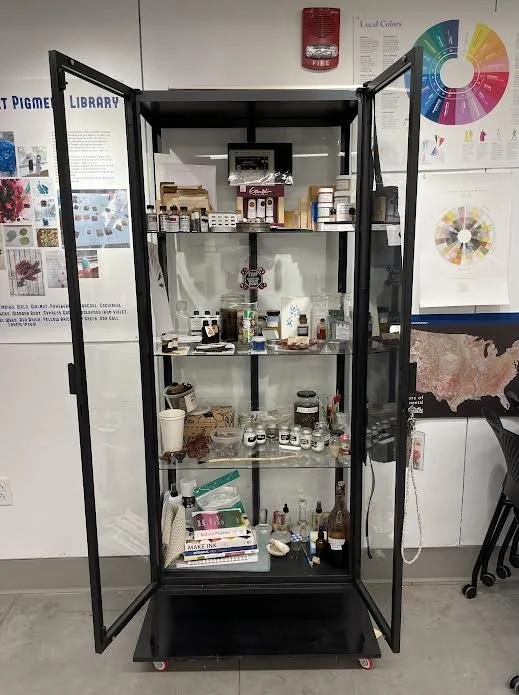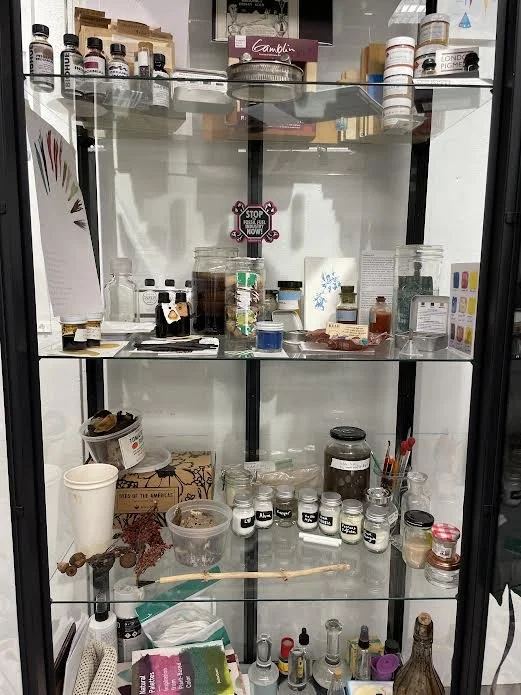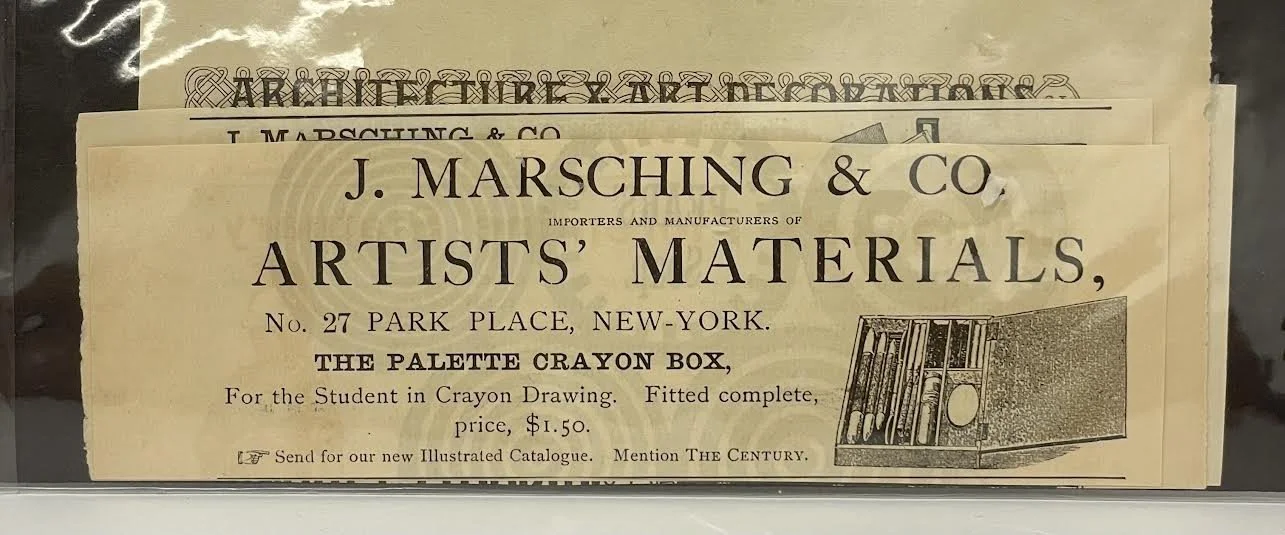
Exploring the World’s Natural Pigments
By: Mallory Roy
May 3, 2023
Color can be found all around us.
We can see it in nature, buildings, and everyday mundane items. Color is a big part of our style and how we express ourselves. It is never not around us. Being human beings, we take in what's around us and absorb it into our everyday lives—especially artists, who take their surroundings into their creative process affecting the overall result. Color plays a huge part in art, whether it's working with textiles, digital or on paper. However, most colors that we work with are toxic and poor for the environment.
Jane D. Marsching is the head of the Sustainability Minor at MassArt. Professor Marsching has been exploring pigments since 2013. However, pigments are a family trade that dates a while back starting with her great-grandfather, John Marsching, in the late 1900s. She has experimented with many natural resources. One of her favorites to tackle is tannins, a pigment found in trees. Marsching refers to herself as a “tannin worker”. One of Marsching’s most recent projects is making ink from 26 trees sourced at the local Arnold Arboretum. She does that by gathering materials from the trees. She will take berries, leafs, and bark from the trees. Marsching always keeps in mind the ethics of foraging: to always only pick up what's fallen and to only take what she needs. Marsching makes sure to “think about the being” of the tree and ecology of the area when foraging for supplies. By doing that, she has sustainably created beautiful ink.
MassArt's Resilient Pigment Library was founded in 2020 by Professor Jane D. Marsching.This library has natural materials that make rich colorful ink, pigments, oil paints, and watercolors. Some of the more common items in the library are Indigo, walnut, charcoal, and ochre. The library is continuously growing by people submitting experiments playing with natural resources to get luscious pigments. Resources are all around us, you just have to be creative and look for them.
Sustainable pigments are always evolving by people exploring their natural resources and getting surprises in return. We should dive deeper into our ecology and learn more about what it has to offer. As Professor Marsching says, we should “not be blind to the world around us”, and instead, soak it in and get inspired. There are pigments all around us; go to the local Arnold Arboretum. Maybe go on a walk or look in your kitchen. Get inspired with the natural ingredients the world has to offer.
You can get in touch and learn more about Jane Marsching at her website -





